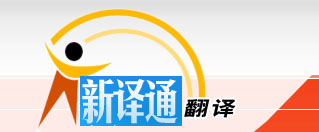尽管六十年来, 中国人口的文化知识水平有了长足的提高。但是就整体而言, 中国人的公众科学素养还是比较低的。据中国科普研究所2003年的调查数据显示, 中国人具有科学素养的比例是1.98%, 也就是说, 平均在100个人中, 只有不到两个人具备基本的科学素养[1]。而2000年美国人的科学素养水平比例是17%, 日本是5.3%。2005年进行的第六次中国公众科学素养抽样调查显示, 在正规的学校教育之外, 大众媒体是我国科技信息的主要传播途径。而电视是我国公众科技信息的最主要来源, 高达91%的公众是通过电视获得科技发展信息的。翻译服务
Though great improvement has been made in the level of knowledge and education of Chinese people for 60 years, in general, the public scientific literacy in China is relatively low. According to the investigation data made by China Research Institute for Science Popularization in 2003, 1.98% of the Chinese people reached the level of scientific literacy. In other words, less than two out of 100 people had scientific literacy. In 2000, 17% people reached the level of scientific literacy in the United States while in Japan, there were 5.3%.According to the 6th sampling investigation for public scientific literacy in China in 2005, except for formal school education, mass media is the major transmission route for China’s scientific and technological information. Television is the major source for China's scientific and technological information. 91% of the people obtain information regarding scientific and technological development through television.
毋庸置疑, 传媒工作者, 尤其是影视科学传播工作者对于提高公众的科学素养负有责任。正如新中国第一代科教电影工作者以传播知识为己任一样, 新一代的科学纪录片创作者则应该有意识地锻炼自己的科学思维能力, 以期能更好地发挥新时期科学传播媒介的作用, 培养公众的科学思维, 促进公民科学素养的形成, 这或许正是时代赋予当今科学传播工作者的历史使命。北京翻译
Undoubtedly, communicators, particularly people engaging in communication of movie and television science have the responsibility to improve public scientific literacy. Just as the first generation of people in new China who engaged in scientific and educational film and took the knowledge transmission as their own duties, the new generation creator who engage in scientific documentary should try to develop their abilities of scientific thinking to better bring into play the role of scientific communication media in the new period, develop public scientific thinking and promote public scientific literacy. This may be the historic mission for today’s people engaging in scientific communication given by the times. 

